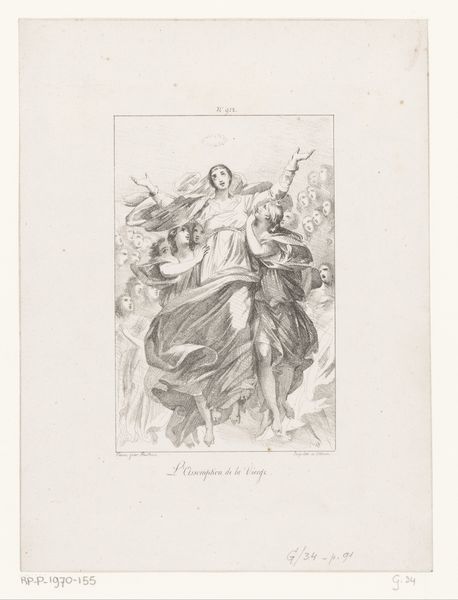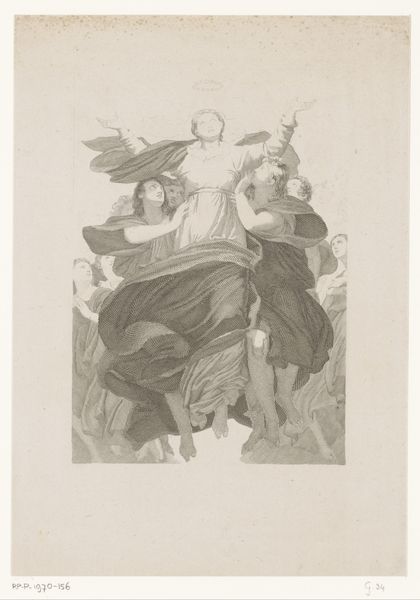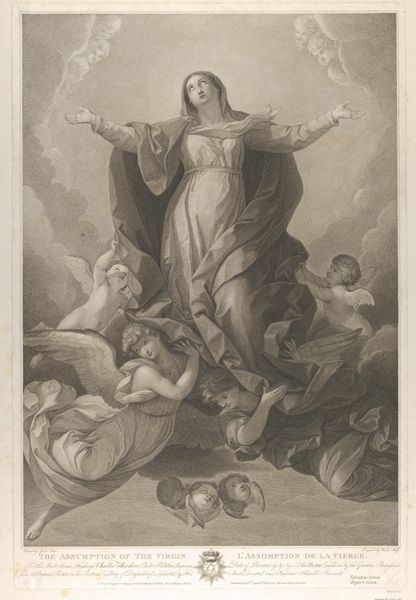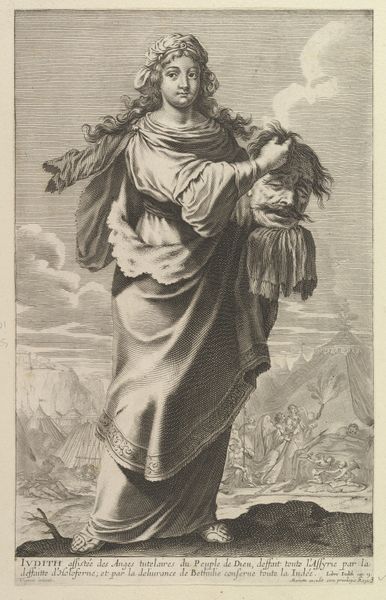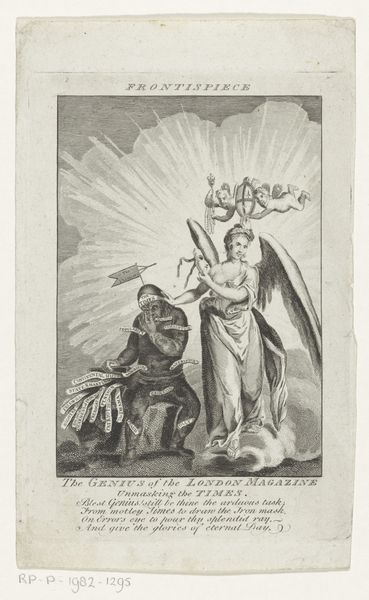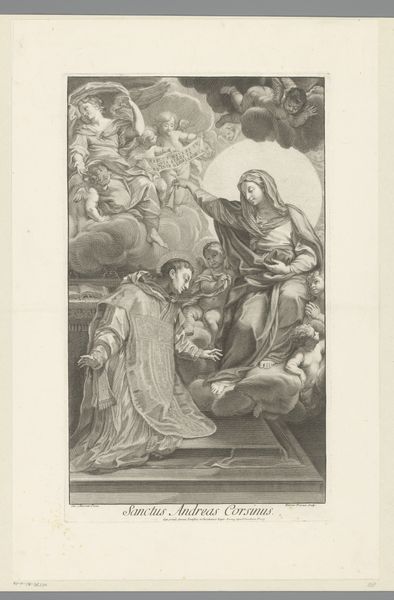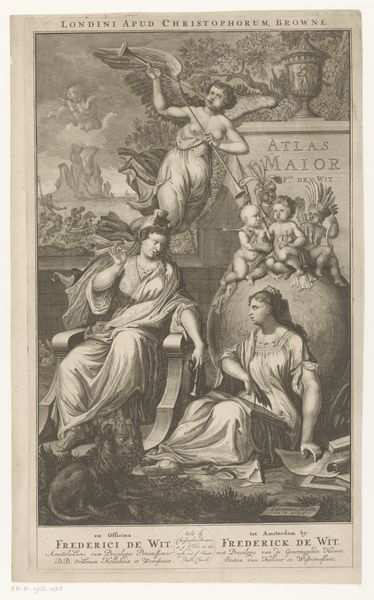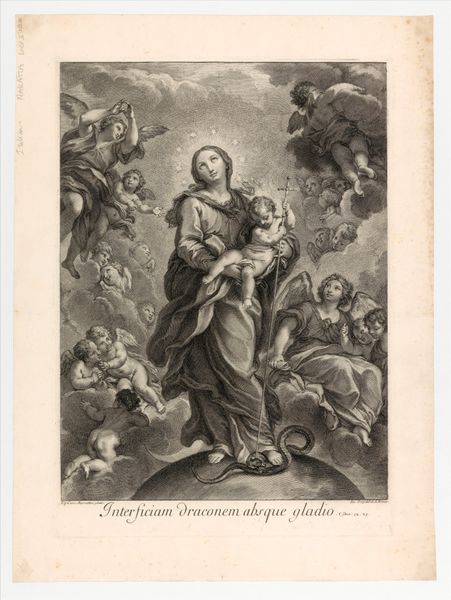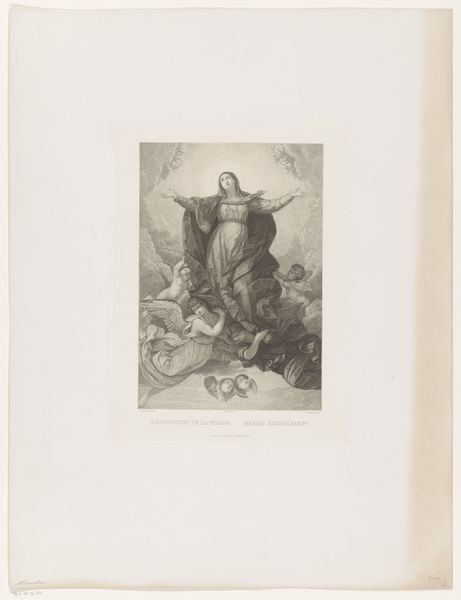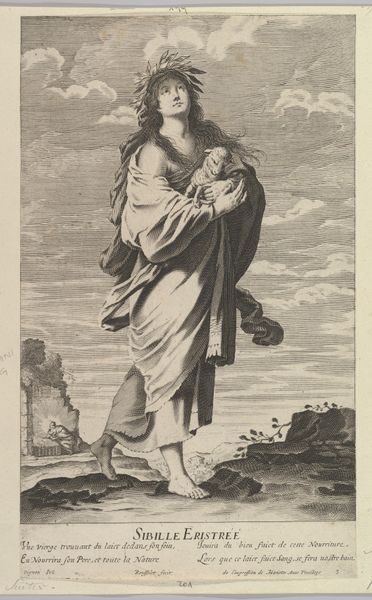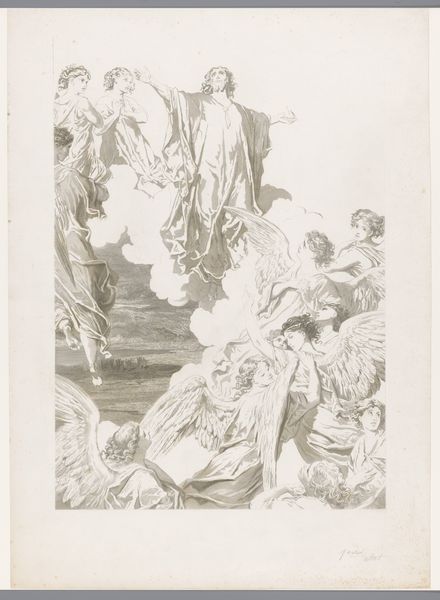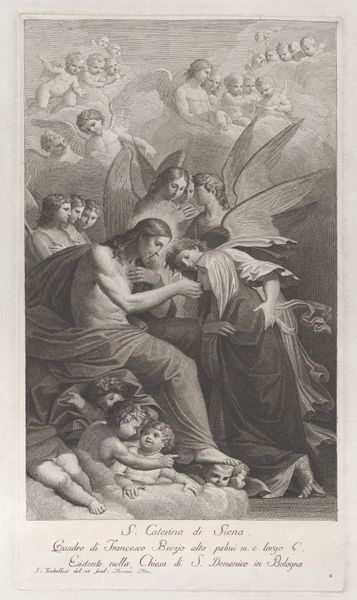
print, engraving
#
allegory
# print
#
figuration
#
romanticism
#
history-painting
#
engraving
Dimensions: height 303 mm, width 207 mm
Copyright: Rijks Museum: Open Domain
Curator: This engraving from 1830 by Jean Bosq is entitled "Hemelvaart van Maria" – or, as we'd say in English, "The Assumption of Mary." Editor: My initial reaction is one of ethereality. It feels very light and airy despite the classical poses and the somewhat limited palette of a black and white print. Curator: Well, the subject matter lends itself to that airy feeling, doesn’t it? Mary’s ascent to Heaven is a potent theme throughout the history of art. But the Romanticism of this piece is palpable; notice how the figures are not grounded. Instead, they're swept up by an unseen force. Editor: Precisely! The swirling drapery and upward gazes of the surrounding figures truly emphasize the ascension narrative. Beyond the explicit religious context, it speaks to something deeply human: the longing for transcendence and elevation above the mundane. The crown above her head seems more symbolic than literal. Curator: The politics surrounding these religious depictions were always charged. The Dutch Republic had a complex relationship with its Catholic past, often grappling with its visual legacy and how these symbols were employed and reinterpreted. Editor: Indeed. And in that light we can see how Mary is typically shown inside a mandorla with hosts of angels lifting her. What is quite remarkable is that a ring of small head-like shapes fill the background, evoking a dreamlike realm in a symbolic way. This is really what pulls you in. Curator: Romanticism certainly shaped the public's taste for religious imagery, moving away from Baroque theatricality toward a more emotionally resonant style, and allowing greater access for secular audiences. And I think Bosq did just that here, by playing on accessible symbolic ideas of ascension, rather than overt demonstrations of religious propaganda. Editor: A perfect example of cultural continuity, updated to reflect a shift in artistic taste and social values! Curator: Exactly. Art doesn't exist in a vacuum; this piece is a clear mirror reflecting social expectations of religious art in the Netherlands during the 1830s. Editor: What initially appears a simple religious scene unveils layers of symbolic meaning, all interwoven with the shifting tastes and societal pressures of its time. Thank you.
Comments
No comments
Be the first to comment and join the conversation on the ultimate creative platform.
